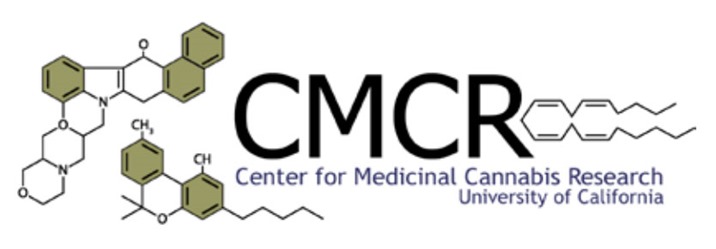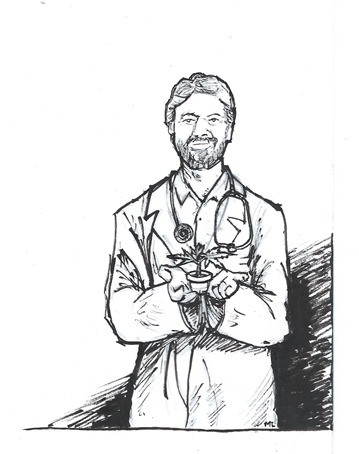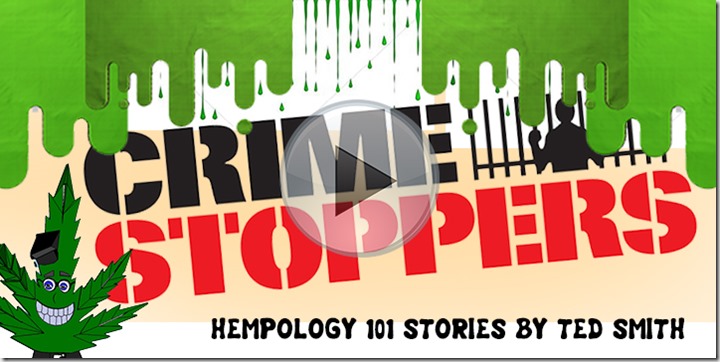
(website: CMCR)
Eliminating the Ignorance and Myth around Medical Marijuana
By Dean Schwind
In the last month of 2014, quietly and without fanfare or hoopla, the US Federal Government unceremoniously unfunded the war on medical marijuana. The U.S. House of Representatives’ approval of the landmark Hinchey-Rohrabacher Amendment to the 1.1 trillion dollar “Cromnibus Spending Bill” essentially blocks the U.S. Department of Justice from using any of its allotted budget to prevent States from enacting and implementing laws legalizing the use of medical marijuana. With the heat off, so to speak, the industry south of the boarder experienced an explosion of economic opportunities in the world of medical marijuana. While long-term advocates celebrated, business sprang into action, making instant fortunes and flooding the marketplace with hundreds of strains, oils, tinctures, and edibles set to cure all that may ail you.
Since the legal door has opened a crack, new players have been lining up to get a foot in. But not all are lining up in hope of providing compassionate relief for people suffering from illness. Many new players in the medical marijuana industry are simply and coldly calculating their business futures in hope of getting firmly established when the door finally and inevitably swings wide open to the larger and far more lucrative recreational marijuana marketplace.
Amid the excitement of the dawning of a new future many people are seeing the 800-pound gorilla in the room for the first time. The gorilla in the form of the—so far only quietly asked—question: Does marijuana actually work for all those illnesses? Can we believe the market claims? Or are they myths? Right behind that gorilla is an even bigger one in the form of the medical question: How does it work?
Suddenly, doctors are faced with being asked to prescribe a drug that, due to its Schedule One designation, for which little to no hard data is available to suggest clinical indications. There are few studies that have proven the efficacy of cannabis as medicine. With serious questions arising around the realization that there are no clear optimal doses for treatment for any of the legally treatable conditions, concerns are understandable. They are mandated by the physicians’ commitment do no harm. Even more problematic for doctors, is the fact that THC/CBD concentrations, content, and potency vary wildly from producer to producer with no standards whatsoever. Not surprisingly there are increasingly louder calls from the medical community and many activists for definitive clinical trial evidence of why and how cannabis works.
Due to the 1972 designation of marijuana as a Schedule One drug, studies of the plant have been limited. But with legalization in the state of California, came the call to understand all the aspects of this medicine scientifically. After meetings between the University of California and members of the state legislature, the Centre for Medical Cannabis Research was established at the University of California San Diego. The funding of the CMCR is the result of proposition 215, otherwise know as the Compassionate Care Act, and SB 847, passed by the state legislature and signed into law by Governor Gray Davis. The legislation calls for a program that oversees objective, high quality medical research that will “enhance understanding of the efficacy and adverse effects of marijuana as a pharmacological agent,” stressing that the project “should not be construed as encouraging or sanctioning the social or recreational use of marijuana”.

The Center coordinates and supports cannabis research throughout the State of California. Research focuses on the potential medicinal benefits of cannabis for diseases and conditions as specified by the National Academy of Sciences, Institute of Medicine Report (1999), and by the Workshop on the Medical Utility of Marijuana, National Institutes of Health (1997).
The initial areas of emphasis for CMCR funding were severe appetite suppression, weight loss, cachexia due to HIV infection, chronic pain—particularly neuropathic pain, severe nausea and vomiting associated with cancer and its treatment. The centre’s scope has grown under the direction of Dr. Igor Grant MD FRC P(C) and has it expanded its research over the years to offer information from studies like: Cannabis for Treatment of HIV-Related Peripheral Neuropathy; Vaporization as a “Smokeless” Cannabis Delivery System; Short-Term Effects of Cannabis Therapy on Spasticity in MS; and Sleep and Medicinal Cannabis, to name but a few. The list of studies is impressive and leaves one with the sense that we have just begun to scratch the surface of understanding all that this plant has to offer.
These clinical studies are important. They address understandable public health concerns, apply controls on the marketplace based in medical fact, and help to find answers that will convince the medical community that no long-term harm comes from the use of medical marijuana. More importantly, successful study of this plant will open the door to future investigations for its use with patients suffering from PTSD and other psychological conditions. The mounting clinical information is beginning to make its way into public awareness. The centre has already established itself as a leader in the field, offering clinical data about medical marijuana to millions of doctors and other organizations worldwide.

(Image: StonerDays)
Recently the National Football League reiterated its policy of suspension for cannabis use. Yet there are multiple current and former players coming out of the pot closet to talk about the pain involved with playing professional football, and the relief of that pain that comes from medical marijuana use. Some estimates claim that more that 60% of current NFL players use marijuana for pain relief. But the league has stated that until the medical community comes out in favour of medical marijuana for pain relief and prescribes it, the policy will not change. The result of California’s forward thinking is that the CMCR is the only accredited and recognized authority on cannabis and pain management in the US. In future it may equip doctors with the information they need to issue with confidence those prescriptions providing relief to ailing NFL players, and eventually to the general public.
The Centre for Medicinal Cannabis Research at the University of California is the benchmark, but just the tip of the iceberg when it comes to the future study of the plant. Major universities and big pharmaceutical giants are now in the process of creating or expanding marijuana studies all over the planet. Our knowledge of the plant is growing exponentially, and former anecdotal evidence is being scientifically proven and/or disproven daily. The truth is coming out about this miraculous plant—and not too soon. The toxicity, stress, and tension of modern life contribute to unparalleled levels of cancer, heart disease, PTSD, anxiety, and environmental sensitivities. Marijuana could prove to be the saviour of humanity in the 21st century, and not just as the legal replacement for alcohol and prescription drugs. It could save us through advances in the medical world. It could save us too through the large-scale production of industrial hemp for use as paper, fuel, textiles, and building materials.
The future marijuana activists have dreamed of has arrived, at least south of the border, offering Canada an opportunity to observe and learn about what not to do when it comes to marijuana in general. As we explore, debate, and eventually vote marijuana into a legal reality in Canada, we can stake our scientific understanding at least partially on the ground breaking research being conducted at CMCR, helping to pave the way for Canadian universities and businesses to play their part in the story of decoding further this ancient gift from the planet.
For more information about CMCR or to read or download any of the studies mentioned in this article please visit http://www.cmcr.ucsd.edu/
-Dean Schwind is a two time cancer survivor, long time commercial and medical marijuana grower, teacher, writer, musician, radio host, and activist. A proud former staff member of the Cannabis Buyers Club of Canada, he has fought on the front lines for the end of prohibition through his alter ego Sticky Kola and the infamous BC band King Bong. Raising money, changing perceptions, and generally freaking the public in an effort to help sick people gain access to the benefits of medical marijuana.





